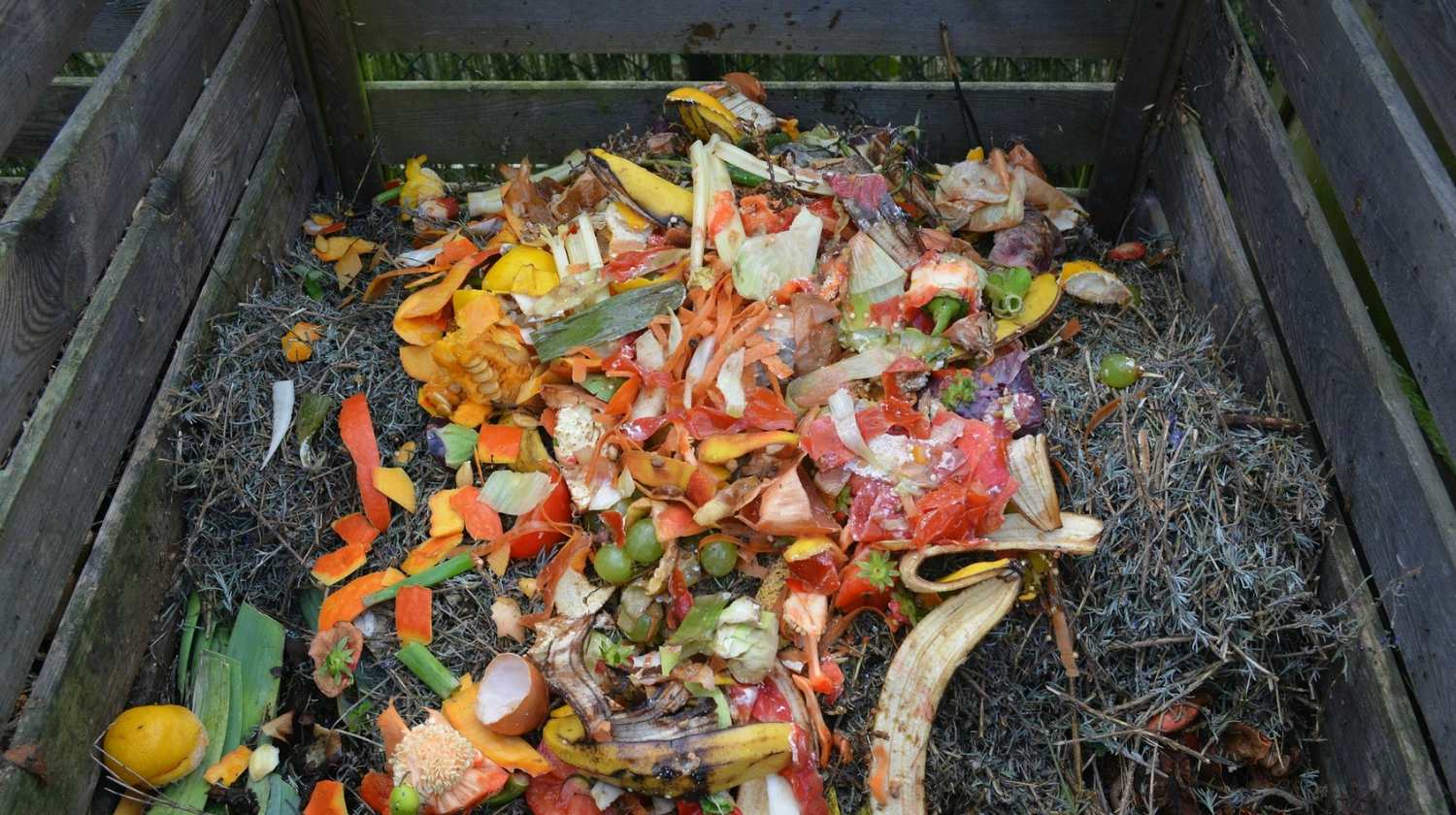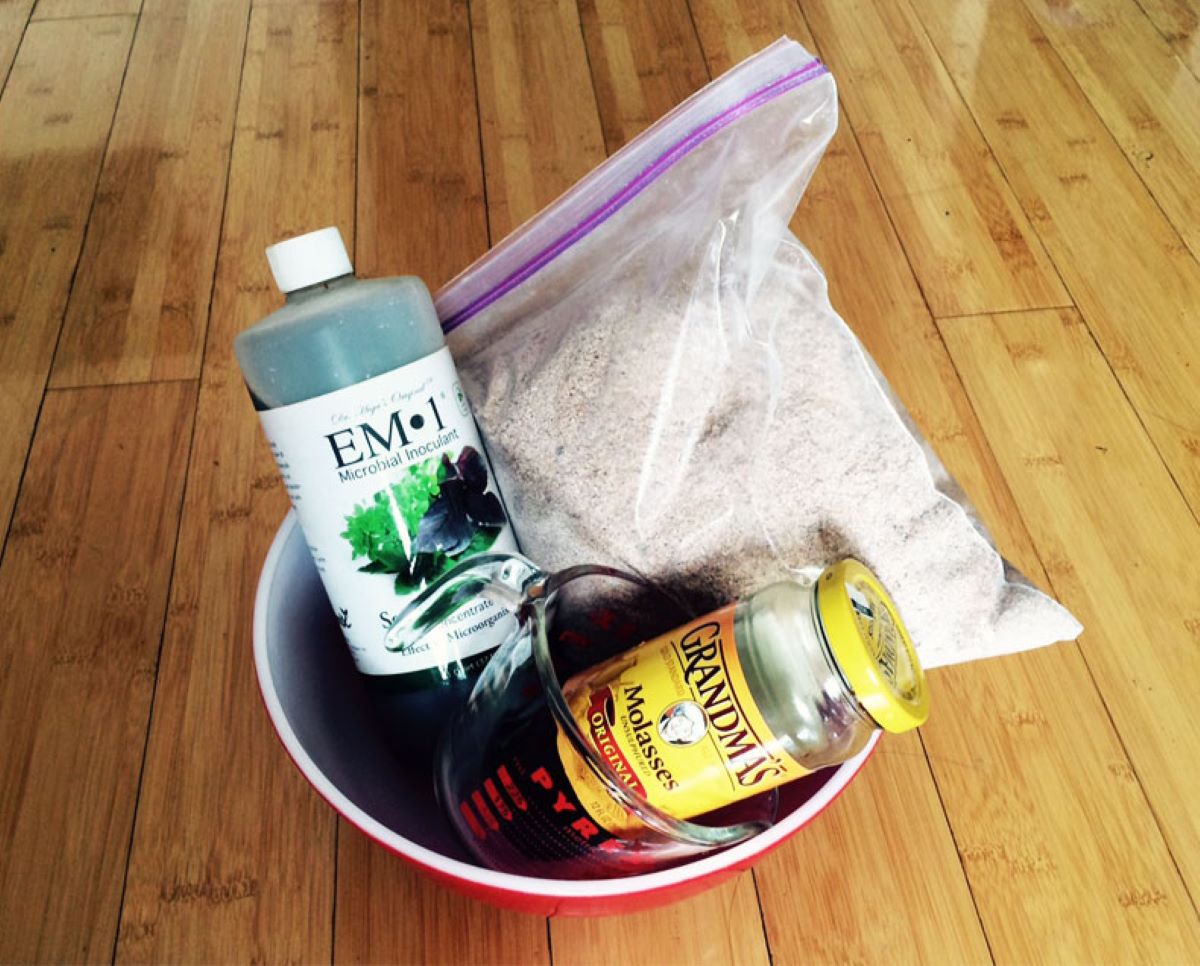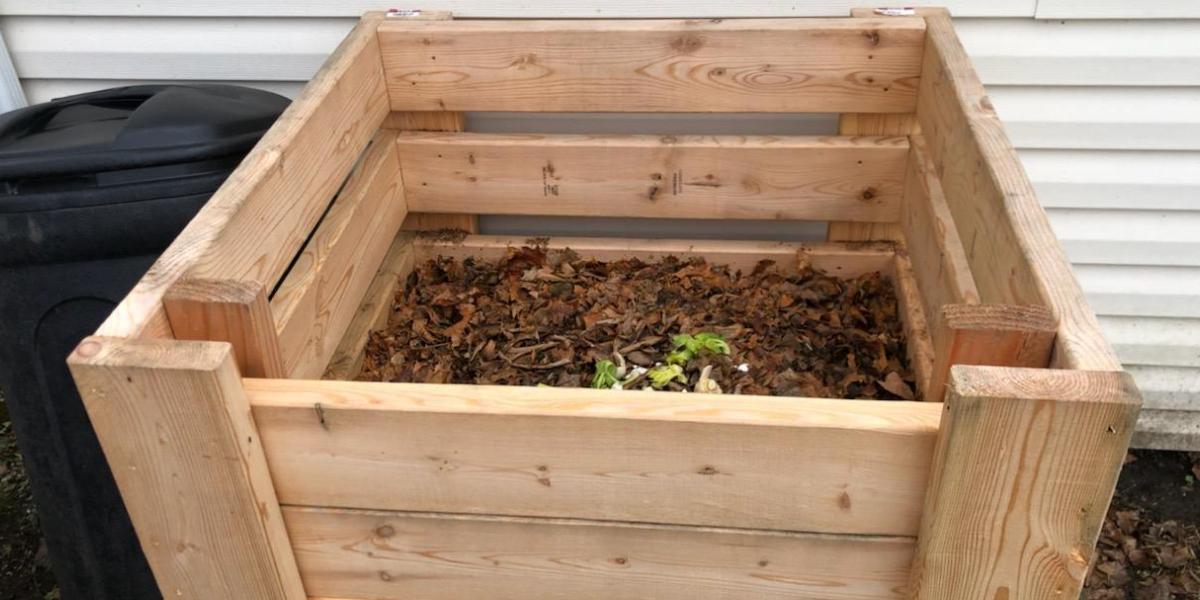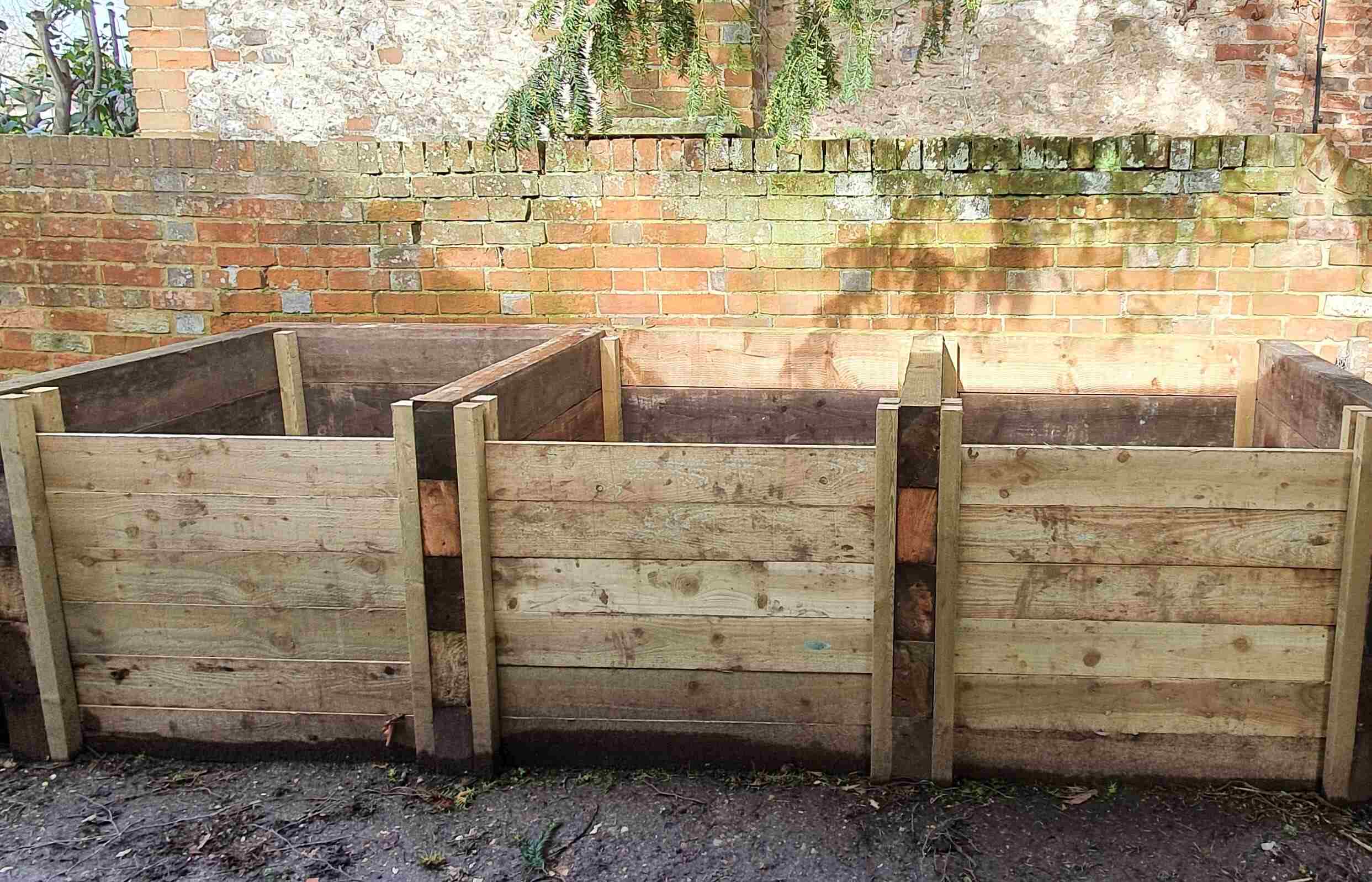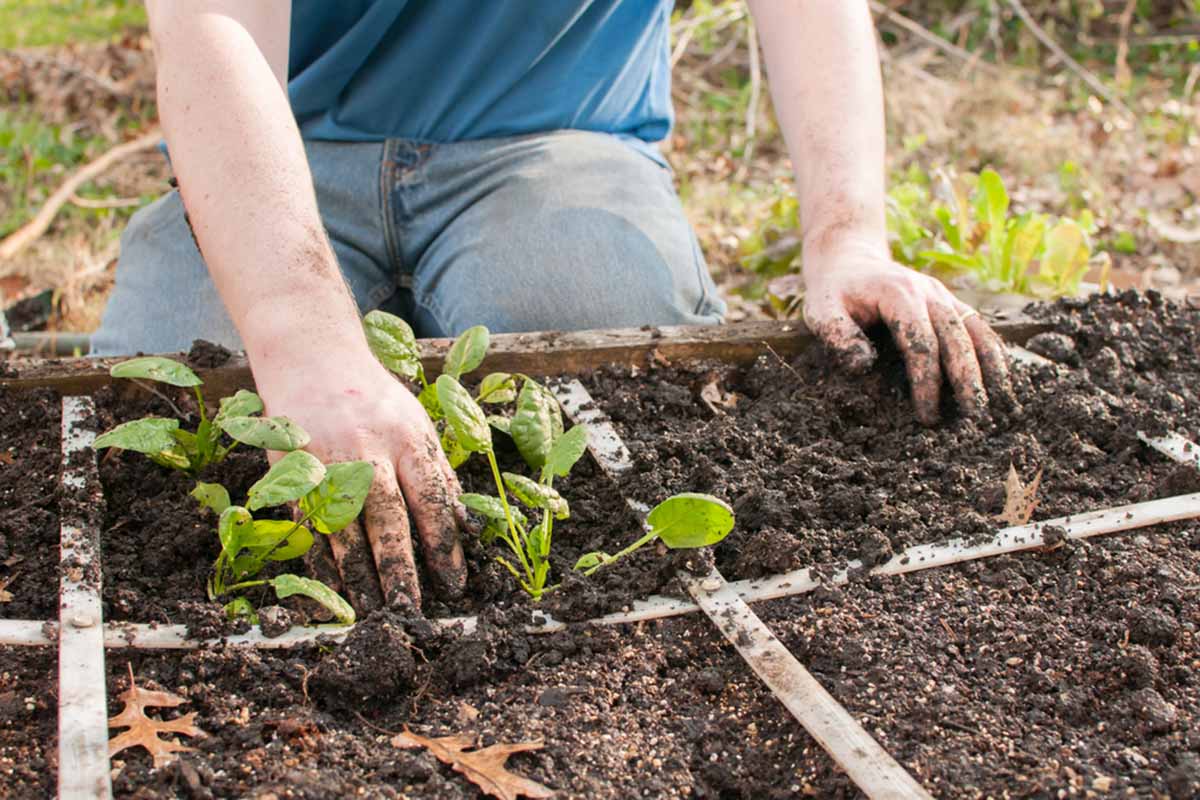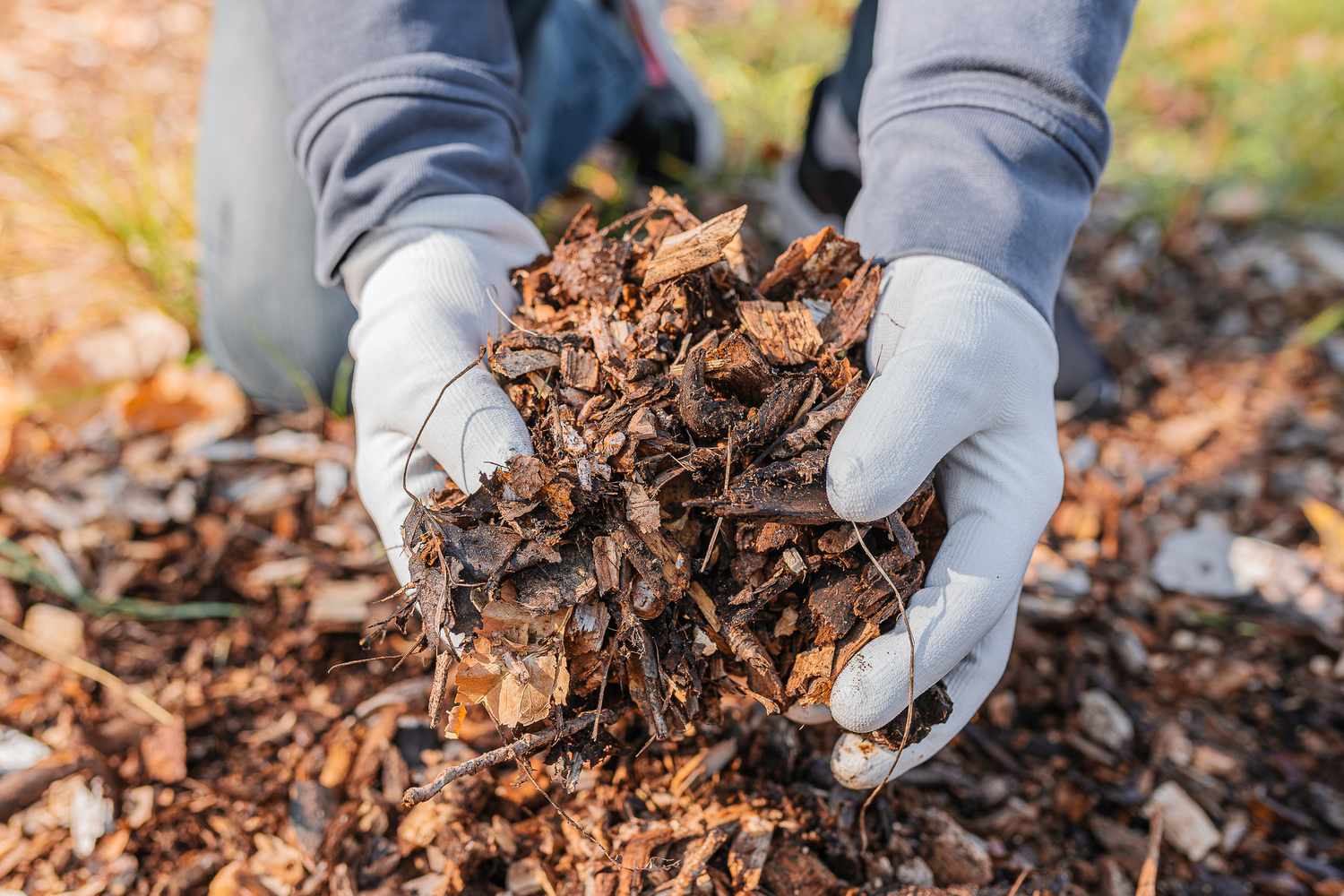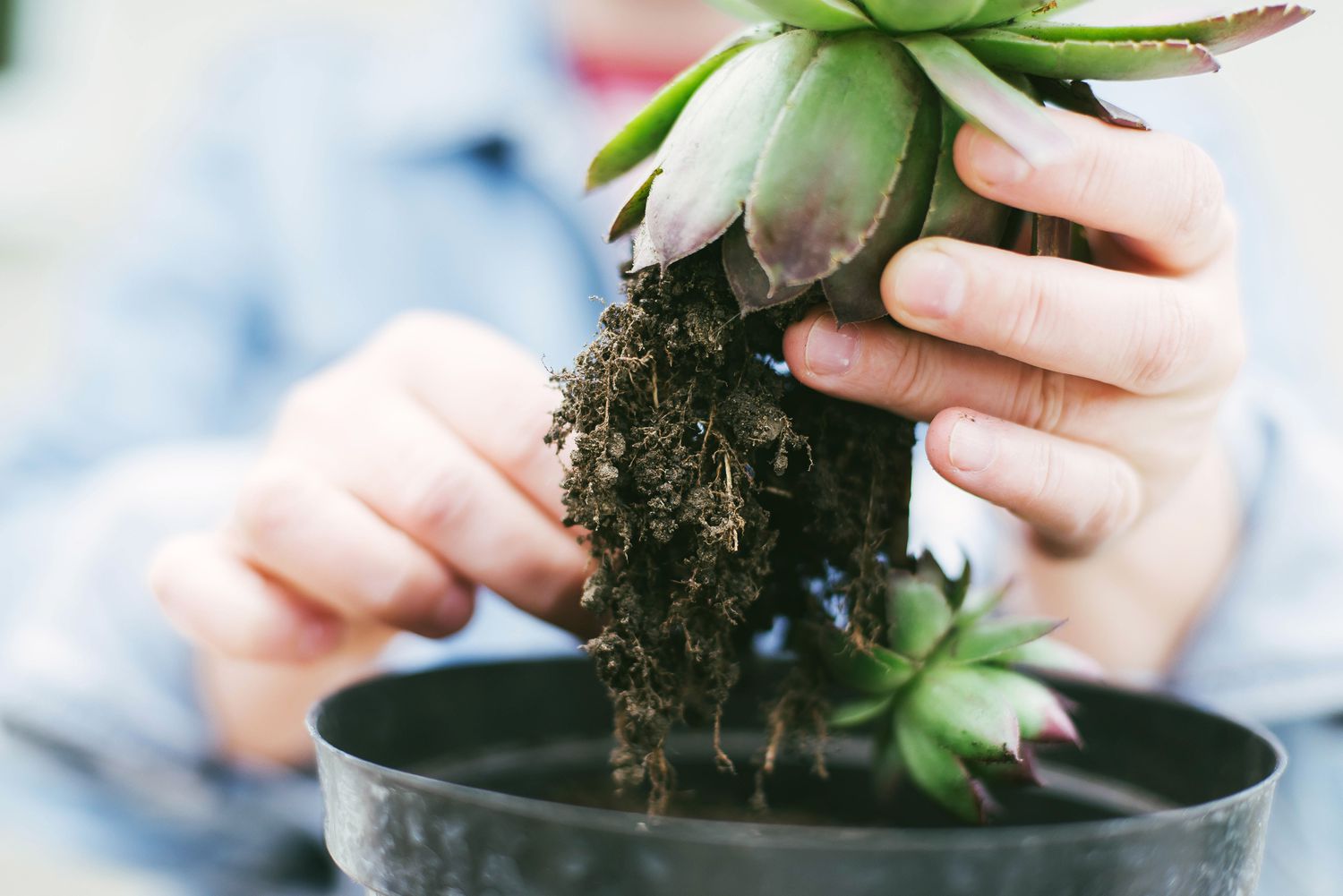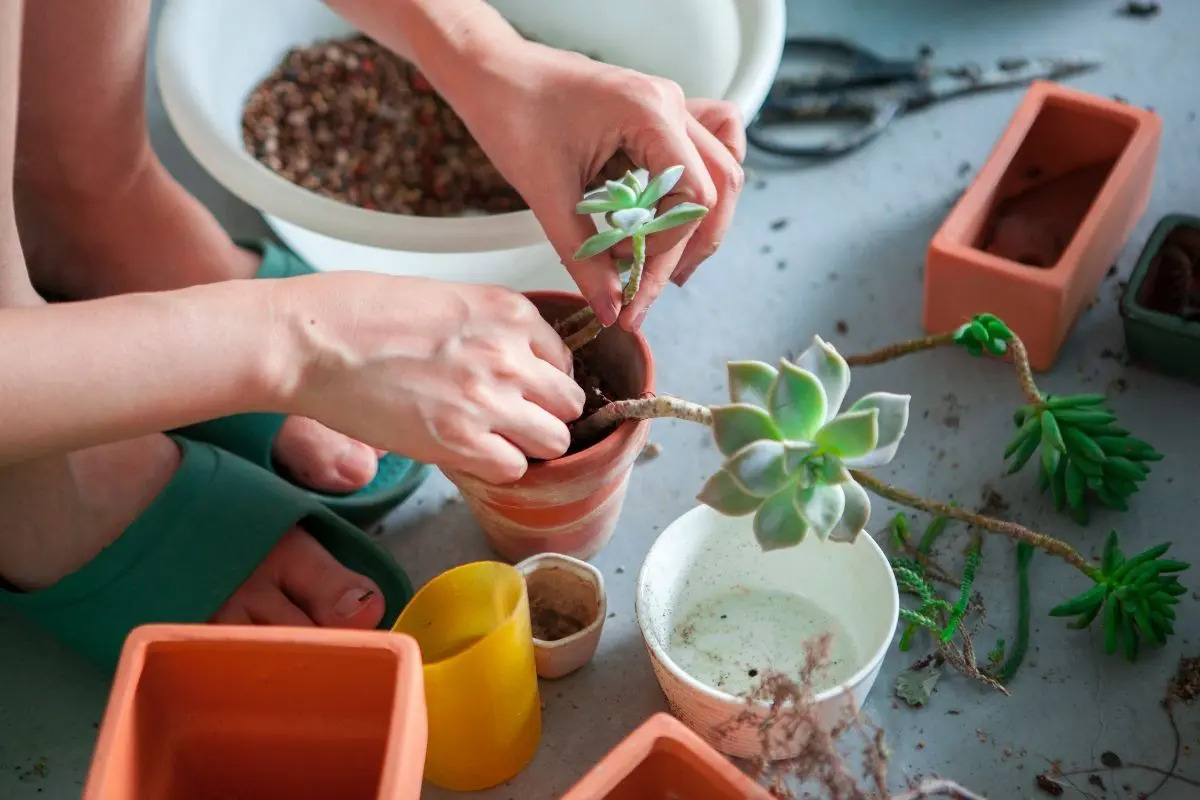Home>Gardening Tips and Tricks>Eco-Friendly Gardening>How Do I Make Compost
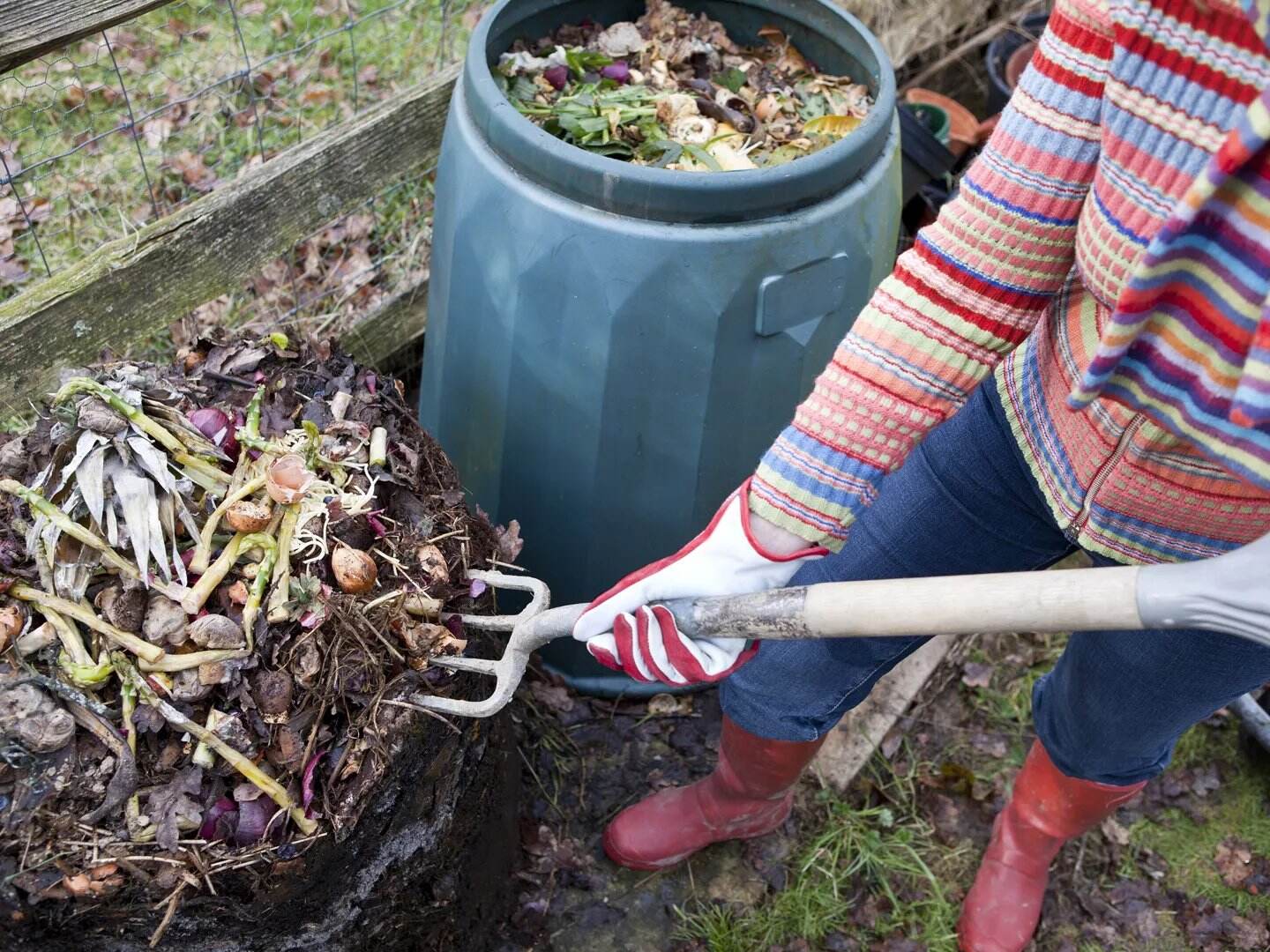

Eco-Friendly Gardening
How Do I Make Compost
Modified: January 22, 2024
Learn how to make compost for eco-friendly gardening. Discover the benefits of composting and easily create nutrient-rich soil for your garden.
(Many of the links in this article redirect to a specific reviewed product. Your purchase of these products through affiliate links helps to generate commission for Chicagolandgardening.com, at no extra cost. Learn more)
Table of Contents
Introduction
Welcome to the world of eco-friendly gardening! If you’re passionate about creating a sustainable garden that is not only beautiful but also benefits the environment, then composting is an essential practice to incorporate into your gardening routine. Composting is a natural process that involves the decomposition of organic materials, such as kitchen scraps, leaves, and yard waste, to create nutrient-rich compost.
By harnessing the power of composting, you can reduce your carbon footprint, minimize waste sent to landfills, and nourish your plants with homemade fertilizer. Whether you’re an experienced gardener looking to improve your soil quality or a beginner who wants to learn how to make compost from scratch, this article will guide you through the process step by step.
In this comprehensive guide, we will explore the different composting methods available, share tips for gathering composting materials, explain how to build and manage a compost pile or bin, troubleshoot common composting issues, and finally, discuss how to harvest and use your compost. By the end of this article, you’ll be equipped with the knowledge and tools to embark on an eco-friendly gardening journey.
Composting is not only beneficial for your garden but also for the broader environment. When organic waste such as food scraps and yard trimmings are sent to landfills, they break down anaerobically, producing harmful greenhouse gases like methane. By composting these materials instead, you are diverting waste from landfills and reducing methane emissions.
Moreover, composting allows you to create your own nutrient-rich soil amendment without relying on chemical fertilizers, thus promoting a healthy and sustainable garden ecosystem. Compost improves soil structure, retains moisture, suppresses weeds, and enhances nutrient availability, resulting in healthier and more robust plants.
Whether you have a small apartment balcony or a spacious backyard, there is a composting method that will suit your space and lifestyle. From traditional outdoor compost piles and bins to indoor vermicomposting using worms, you have plenty of options to choose from. The key is to find a method that aligns with your available space, the amount of organic waste you generate, and your level of involvement in the composting process.
What is Composting?
Composting is a natural process in which organic materials, such as kitchen scraps, yard waste, and plant matter, break down into a nutrient-rich soil amendment called compost. It is a form of recycling that mimics the natural decomposition process that occurs in forests and meadows, where fallen leaves and plants decompose and return nutrients to the soil.
During the composting process, microorganisms, including bacteria, fungi, and insects, along with earthworms and other decomposers, help break down the organic materials. These organisms consume the materials, breaking them down into simpler compounds until they eventually transform into a dark, crumbly substance known as humus, which is rich in essential nutrients.
Composting requires the right combination of organic materials, moisture, oxygen, and temperature to ensure optimal decomposition. The process typically takes several months to a year, depending on factors such as the size of the compost pile, the mixture of materials, and environmental conditions.
There are two main types of composting methods: aerobic and anaerobic. Aerobic composting relies on the presence of oxygen to support the activity of aerobic microorganisms, resulting in a faster and more efficient decomposition process. This method requires regular turning or agitation of the compost pile to allow oxygen to reach all the materials.
In contrast, anaerobic composting occurs in the absence of oxygen and is often associated with slow decomposition and the production of unpleasant odors. While anaerobic composting can still produce usable compost, it requires additional steps to mitigate any smell or potential issues.
Composting not only reduces waste sent to landfills but also enhances soil fertility and promotes sustainable gardening practices. By recycling organic materials back into the soil, compost enriches soil structure, retains moisture, improves nutrient availability, and enhances plant growth. In turn, this reduces the need for chemical fertilizers and pesticides, making it an eco-friendly choice for gardeners.
Composting is a versatile practice that can be adapted to different scales and settings. Whether you have a backyard garden, a community garden plot, or even a small apartment balcony, you can engage in composting. There are various composting options to suit different spaces, ranging from traditional compost bins and piles to specialized worm composting systems or even compost tumblers for those with limited space.
In the following sections, we’ll explore different composting methods and guide you on how to effectively start and manage your own compost pile or bin, based on your resources and preferences.
Benefits of Composting
Composting offers a wide range of benefits for both gardeners and the environment. By incorporating composting into your gardening practices, you can reap the following advantages:
- Reduced landfill waste: Composting diverts organic materials, such as food scraps and yard waste, from ending up in landfills. These materials, when decomposed anaerobically in landfills, produce harmful greenhouse gases like methane, contributing to climate change. By composting, you are significantly reducing waste and the associated environmental impact.
- Natural fertilizer: Compost is a nutrient-rich soil amendment that improves fertility and enhances plant growth. It provides essential nutrients, such as nitrogen, phosphorus, and potassium, as well as trace minerals necessary for healthy plant development. Using compost as a natural fertilizer helps replenish soil nutrients, creates a balanced soil pH, and reduces the need for synthetic fertilizers.
- Improved soil structure: Compost improves soil structure by adding organic matter and enhancing its ability to hold water and nutrients. It helps sandy soils retain moisture and nutrients, while it helps clay soils become more porous and better drained. By improving soil structure, compost promotes healthy root growth and allows plants to access nutrients more effectively.
- Water conservation: Compost can increase the water-holding capacity of soil, reducing the need for frequent irrigation. Its ability to retain moisture helps prevent water runoff and erosion, ensuring that your plants receive adequate hydration during dry periods. Conserving water not only saves resources but also contributes to a more sustainable garden ecosystem.
- Weed suppression: When applied as a mulch or incorporated into the soil, compost can help suppress weeds by blocking sunlight and preventing weed seeds from germinating. Additionally, the microorganisms in compost can outcompete weed roots for nutrients, reducing weed growth. By harnessing the weed-suppressing properties of compost, you can spend less time tackling unwanted plants and more time enjoying your garden.
- Environmental sustainability: Composting is an environmentally sustainable practice that reduces the need for synthetic fertilizers and pesticides, which can harm beneficial organisms and pollute waterways. By opting for organic compost, you are promoting a healthier and more sustainable approach to gardening, benefiting both your garden and the broader ecosystem.
These are just a few of the many benefits of composting. As you become more familiar with composting, you will discover additional advantages specific to your garden and region. The next sections will guide you through the process of choosing a composting method, gathering composting materials, and building and managing your very own compost pile or bin.
Choosing a Composting Method
When it comes to composting, there are various methods available, each suited to different spaces, preferences, and levels of involvement. Understanding your options will help you select the composting method that best fits your needs. Here are a few popular composting methods to consider:
- Traditional compost pile: This method involves creating a pile of organic materials directly on the ground. To ensure proper aeration and decomposition, it’s important to layer brown materials (such as dried leaves or straw) with green materials (such as kitchen scraps and fresh grass clippings). Turning the pile regularly helps speed up the decomposition process. This method is ideal for those with ample outdoor space and who are looking for a low-cost, low-maintenance approach.
- Compost bin: A compost bin is a container specifically designed for composting. It can be made from various materials, such as wood, plastic, or wire mesh. Compost bins provide a contained and neater composting solution compared to a traditional pile. They offer better pest control and help retain heat, which accelerates decomposition. Compost bins are suitable for individuals with limited outdoor space, as they can be placed on a patio or balcony.
- Vermicomposting: Vermicomposting utilizes worms, typically red wigglers or Eisenia fetida, to break down organic materials. Specialized worm bins, also known as vermicomposters, provide a controlled environment for worms to thrive. The worms consume the organic waste and produce nutrient-rich worm castings, which can be harvested and used as compost. Vermicomposting is an excellent choice for those with limited outdoor space, as it can be done indoors or on a small balcony.
- Compost tumbler: Compost tumblers are rotating bins that make turning the compost easier. By spinning the tumbler, you can mix the materials and ensure better aeration without the need for manual turning. This method speeds up the composting process and allows for a faster turnover of finished compost. Compost tumblers are ideal for those who want a more efficient and convenient composting experience, although they are typically more expensive than other methods.
- Bokashi composting: Bokashi composting is an anaerobic fermentation process that utilizes a specialized inoculated bran to break down organic waste. The waste is placed in an airtight container and layered with the inoculated bran. Over time, the waste undergoes fermentation, producing a nutrient-rich liquid fertilizer. Bokashi composting is suitable for individuals who want to compost cooked food, dairy, and meat products, as it can handle a wider range of materials compared to other methods. It’s also a good option for those with limited space or who prefer odorless and low-maintenance composting.
Consider your available space, the amount of organic waste you generate, and your gardening goals when selecting a composting method. Remember that different methods have different requirements and maintenance levels. Also, keep in mind that combining multiple composting methods, such as using a traditional pile in conjunction with a worm bin, can be advantageous for maximizing compost production.
Your chosen composting method will set the foundation for successful composting. In the next sections, we will delve into the process of gathering composting materials, building a compost pile or bin, and effectively managing the compost to ensure optimal decomposition.
Gathering Composting Materials
Composting requires a variety of organic materials to create a balanced and nutrient-rich compost pile. Gathering the right mix of materials is crucial for the success of your composting efforts. Here are some key materials to consider:
- Brown materials: Brown materials are high in carbon and provide the bulk and structure to your compost. These materials include dried leaves, straw, wood chips, shredded newspaper, and cardboard. Aim for a carbon-to-nitrogen ratio of about 30:1 to achieve proper decomposition.
- Green materials: Green materials are high in nitrogen and provide the essential nutrients that facilitate decomposition. These materials include fruit and vegetable scraps, coffee grounds, tea leaves, fresh grass clippings, and plant trimmings. They help maintain the moisture and heat necessary for microbial activity.
- Yard waste: Yard waste, such as grass clippings, leaves, branches, and plant trimmings, can be an excellent source of organic matter for your compost. However, avoid using invasive weeds, plants treated with herbicides, or diseased plant material, as these can introduce unwanted pests or diseases into your compost.
- Kitchen scraps: Food scraps from your kitchen provide a valuable source of nutrients for your compost. Include fruit and vegetable peels, eggshells, coffee grounds, and tea bags. Avoid adding meat, dairy products, oily foods, or heavily seasoned items, as they can attract pests or create unpleasant odors.
- Shredded paper and cardboard: Uncoated shredded paper and cardboard can serve as excellent carbon-rich materials for your compost. Tear them into small pieces to facilitate decomposition. Avoid using glossy or heavily inked paper, as the chemicals in the ink may not be suitable for the composting process.
- Animal manure: Well-aged, herbivore animal manure, such as cow, horse, or rabbit manure, can provide additional nitrogen and microbes to your compost. However, avoid using fresh or carnivorous animal manure, as they can introduce pathogens or create imbalances in your compost pile.
- Avoidance of certain materials: To maintain a healthy compost, avoid adding items such as diseased plants, weed seeds, meat, dairy products, bones, oils, fats, pet waste, and treated wood or sawdust. These materials can attract pests, create odors, or introduce harmful substances into your compost.
Remember, composting is all about finding the right balance between carbon-rich (brown) and nitrogen-rich (green) materials. Aim for a mix that resembles a damp sponge, where the materials are moist but not soggy. As you gather your composting materials, consider collecting them in a designated container or compost bucket near your kitchen, making it easier to transport them to your compost pile or bin.
Additionally, if you have access to a local municipal composting program, you can inquire about resources or purchasing finished compost to incorporate into your garden. This can provide an added boost to your soil fertility while supporting sustainable waste management practices.
In the next section, we will explore the process of building a compost pile or bin, using the materials you have collected, to kickstart the decomposition process.
Building a Compost Pile or Bin
Once you have gathered your composting materials, it’s time to build a compost pile or utilize a compost bin, depending on your chosen method. Building a well-structured compost pile or filling a compost bin properly is essential for optimal decomposition and efficient composting. Here are the steps to follow:
- Select a location: Choose a suitable location for your compost pile or bin. Ideally, it should be on level ground and have good drainage. Consider placing it near your garden to make it convenient for transferring finished compost to your plants.
- Prepare the base: If you are using a compost bin, ensure it is secure and stable. If you are building a compost pile directly on the ground, loosen the soil and remove any grass or weeds to allow direct contact between the organic matter and the soil, promoting easier access for beneficial microorganisms.
- Create layers: Begin by adding a layer of brown materials, such as dried leaves or straw, to the base of your compost pile or bin. Follow this with a layer of green materials, such as kitchen scraps or fresh grass clippings. Continue layering brown and green materials until you have used up all your composting materials.
- Aim for a balanced ratio: As you build your compost pile or fill your bin, maintain a balance between brown and green materials. Aim for a carbon-to-nitrogen (C:N) ratio of roughly 30:1. You can use a compost calculator or reference guides to estimate the C:N ratios of the materials you are using.
- Add moisture: It’s important to ensure that your compost pile or bin remains moist but not overly saturated. As you build the layers, sprinkle water over each layer to provide adequate moisture. The composting process requires moisture to support microbial activity and decomposition. If the pile becomes too dry, water it lightly with a hose or a watering can.
- Consider aeration: For compost piles, turning or aerating the pile regularly is vital to supply oxygen and facilitate decomposition. If you are using a compost bin, ensure it has proper ventilation to allow for airflow. Maintaining oxygen levels is necessary for aerobic decomposition and prevents the formation of unpleasant odors.
- Cover the pile (optional): Covering your compost pile with a tarp or breathable cover can help retain heat and moisture, speeding up the decomposition process. However, this step is optional and may not be necessary in all weather conditions.
Remember to keep adding compost materials to your pile or bin as they become available. Additions of kitchen scraps, yard waste, and other organic materials will help to maintain a healthy composting environment.
Building a compost pile or filling a compost bin is just the first step in the composting process. In the following sections, we will explore how to manage your compost, troubleshoot common issues, and harvest and utilize your finished compost.
Managing the Compost
Proper management of your compost is crucial for ensuring successful decomposition and producing high-quality compost. Regular monitoring and a few key practices will help you maintain the optimal conditions for microbial activity and nutrient-rich compost. Here are some important aspects to consider when managing your compost:
- Turning the compost: Turning or aerating the compost pile regularly is essential for providing oxygen to the microorganisms and promoting decomposition. Use a pitchfork, shovel, or compost turning tool to mix the outer layers with the inner layers of the pile. Aim to turn the compost every couple of weeks, or whenever the internal temperature drops significantly.
- Monitoring moisture levels: Check the moisture content of your compost regularly. The pile should be consistently moist, similar to a damp sponge, to support microbial activity. If the compost appears dry, water it lightly. If it is overly wet, add dry brown materials to absorb excess moisture and enhance airflow.
- Managing temperature: A well-functioning compost pile will generate heat as the organic materials decompose. Monitoring the internal temperature of your compost can help ensure optimal decomposition. Aim for a temperature range of 130-160°F (54-71°C) to promote the breakdown of pathogens and weed seeds. If the temperature is too high, the pile may become anaerobic, while temperatures that are too low can indicate slow decomposition.
- Maintaining the carbon-to-nitrogen ratio: Periodically check the carbon-to-nitrogen (C:N) ratio of your compost pile. Adding additional brown or green materials can help adjust the ratio if it becomes unbalanced. The ideal C:N ratio is approximately 30:1, but slight variations won’t negatively impact the composting process.
- Minimizing odor: Compost should have an earthy smell, similar to that of damp soil. If your compost develops unpleasant odors, it may be a sign of improper airflow or excessive moisture. Turning the pile and adding more dry brown materials can help address odor issues. Avoid adding materials like meat, dairy, or oils, as they can contribute to foul smells.
- Controlling pests: Proper management of your compost pile can help minimize pest issues. Avoid adding materials that attract pests, such as meat, dairy products, or oily foods. If pests like flies or rodents become a problem, cover your compost pile or bin with a tight-fitting lid or wire mesh to deter them.
- Patience and time: Composting is a natural process that requires some time. The duration of decomposition may vary depending on factors such as the size of the pile, the materials used, and environmental conditions. Be patient and allow the composting process to progress naturally.
By actively managing your compost and addressing any issues promptly, you can ensure efficient decomposition and create nutrient-rich compost for your garden. Regularly monitoring moisture, temperature, and turning the pile will help maintain favorable conditions and expedite the composting process.
In the next section, we will explore common issues that can arise during composting and discuss troubleshooting techniques to help you overcome them and achieve successful composting.
Troubleshooting Common Issues
While composting can be a straightforward process, you may encounter some common issues along the way. By understanding these challenges and implementing appropriate solutions, you can overcome setbacks and continue your composting journey successfully. Here are some common issues and troubleshooting techniques:
- Foul odors: If your compost pile has a strong, unpleasant odor, it may be a sign of anaerobic conditions or excess moisture. To remedy this, turn the pile to improve aeration and add more dry brown materials to absorb excess moisture. Avoid adding materials that are prone to causing odors, such as meat, dairy, or oils.
- Persistent pests: Flies and rodents may be attracted to your compost pile if it contains materials like meat, dairy products, or oily foods. To deter pests, cover your compost pile or bin tightly with a lid or wire mesh. Additionally, avoid adding materials that are known to attract pests and ensure proper aeration and decomposition within the pile.
- Slow decomposition: If your compost is taking longer than anticipated to decompose, several factors may be at play. Evaluate the carbon-to-nitrogen (C:N) ratio of your compost pile and adjust it if necessary. Ensure sufficient aeration by turning the pile regularly and consider adding smaller pieces or shredding bulky materials to facilitate decomposition. Finally, check the moisture level to make sure it’s within the optimal range for composting.
- Excessive moisture: If your compost pile is overly wet, it can become compacted and anaerobic, leading to slow decomposition and foul odors. Add dry brown materials like dried leaves, straw, or shredded newspaper to absorb excess moisture. Turning the pile will also help improve aeration and prevent waterlogged conditions.
- Unwanted plant growth: If you notice weed seeds sprouting in your compost, it may be due to inadequate temperatures or incomplete decomposition. Increase the temperature and ensure consistent turning to effectively kill weed seeds. Avoid introducing weed plants or seeds to the compost pile, as well as mature weeds that have gone to seed.
- Persistent heat: While some heat is expected during decomposition, excessively high temperatures in your compost pile can indicate an imbalance or improper aeration. If the internal temperature consistently exceeds the ideal range of 130-160°F (54-71°C), consider adding more brown materials or increasing turning frequency to introduce more oxygen and regulate the temperature.
Remember that composting is a dynamic process, and it may take some time to troubleshoot and resolve issues. Patience, observation, and adjustments are key to successful composting. With practice, you will become more adept at identifying and addressing any challenges that arise.
In the final section, we will explore the rewarding process of harvesting and utilizing your finished compost, completing the cycle of sustainability in your eco-friendly garden.
Harvesting and Using Compost
Once your compost has gone through the decomposition process and transformed into a dark, crumbly substance, it’s time to harvest and utilize your finished compost. Harvesting compost is an exciting and rewarding step in the composting journey, as it allows you to reap the benefits of your efforts and nourish your garden. Here’s how to harvest and use your compost:
- Stop adding materials: Before harvesting your compost, stop adding new materials to the pile or bin. This will allow the remaining materials to finish decomposing.
- Check for readiness: Depending on the size of your compost pile and the materials used, the composting process typically takes several months to a year. Your compost is ready to harvest when it has a dark brown or black color and a rich, earthy smell. It should be crumbly in texture, with no identifiable organic materials remaining.
- Harvesting from a pile: If you have a compost pile, start harvesting from the bottom of the pile. Use a garden fork or shovel to remove the finished compost, transferring it to a wheelbarrow or container. Make sure to leave any unfinished materials or recognizable organic matter behind to continue decomposing.
- Harvesting from a bin: If you’re using a compost bin, you can harvest the finished compost by removing the contents from the bin. If your bin has multiple compartments, leave the partially decomposed materials in one section while harvesting from another. Alternatively, some compost bins are designed with a door or opening at the bottom, making it easier to collect the finished compost without disturbing the rest of the pile.
- Sifting (optional): If desired, you can sift your harvested compost to remove any large particles or unfinished materials. This will yield a finer finished product that can be used for seed starting, potting mixes, or top dressing for your garden beds.
- Using your compost: Put your harvested compost to good use in your garden. It can be applied in various ways, including:
- As a soil amendment: Incorporate the compost into your existing garden beds or vegetable patches to improve soil structure and nutrient content.
- As a top dressing: Spread a layer of compost on top of your gardens or potted plants. This will help retain moisture, suppress weeds, and slowly release nutrients to the plants over time.
- In potting mixes: Blend compost with other organic materials such as peat moss, coconut coir, and vermiculite or perlite to create nutrient-rich potting mixes for container gardening.
- In seed starting: Mix compost with a sterile growing medium to provide young seedlings with an initial supply of nutrients as they germinate and grow.
- As a compost tea: Mix compost with water in aeration bags or buckets to create a compost tea, a nutrient-rich liquid fertilizer to nourish your plants.
Remember to apply compost in appropriate quantities to avoid over-fertilization. Start with a thin layer and gradually increase the amount over time. Additionally, continue composting by creating a new pile or adding fresh materials to your existing pile or bin for ongoing sustainability and a continuous supply of compost in future seasons.
By harvesting and utilizing your compost, you are closing the loop on sustainable gardening practices. You are reducing waste, improving soil health, and ensuring the long-term vitality of your garden ecosystem.
Conclusion
Composting is a rewarding and eco-friendly gardening practice that allows you to recycle organic materials, reduce waste, and create nutrient-rich compost to nourish your plants. By harnessing the power of decomposition, you can foster a more sustainable garden ecosystem while minimizing the use of synthetic fertilizers and pesticides.
In this comprehensive guide, we explored the process of composting from start to finish. We learned what composting is and why it is beneficial, including its ability to reduce landfill waste, provide natural fertilizer, improve soil structure, conserve water, suppress weeds, and promote environmental sustainability.
We discussed various composting methods, such as traditional compost piles, compost bins, vermicomposting, compost tumblers, and Bokashi composting. Each method offers its own advantages and can be tailored to suit different spaces and preferences.
We also explored the importance of gathering the right composting materials, including brown and green materials, yard waste, kitchen scraps, shredded paper, and animal manure. A balanced carbon-to-nitrogen ratio and proper moisture levels are essential for successful composting.
Building a compost pile or filling a compost bin requires careful layering and attention to aeration and moisture. Regularly turning the pile and monitoring temperature, moisture, and the carbon-to-nitrogen ratio will help maintain an optimal composting environment.
Throughout the composting process, it’s important to troubleshoot common issues such as foul odors, pest infestations, slow decomposition, excessive moisture, weed growth, and excessive heat. Taking the appropriate steps to address these challenges will help you overcome them and achieve successful composting.
The final step in the composting journey is harvesting and utilizing your finished compost. From applying it as a soil amendment or top dressing in your gardens to using it in potting mixes or creating compost tea, there are numerous ways to reap the benefits of your compost and nourish your plants.
Composting is a continuous and ongoing process. As you become more experienced, you will refine your techniques, adapt to the specific needs of your garden, and develop a deeper understanding of the intricate web of life that composting supports.
By embracing composting in your gardening practices, you are not only contributing to a healthier and more sustainable environment, but also cultivating a deeper connection to the natural world. So, go forth and compost, and let the magic of decomposition transform your garden into a thriving haven of eco-friendly beauty.
